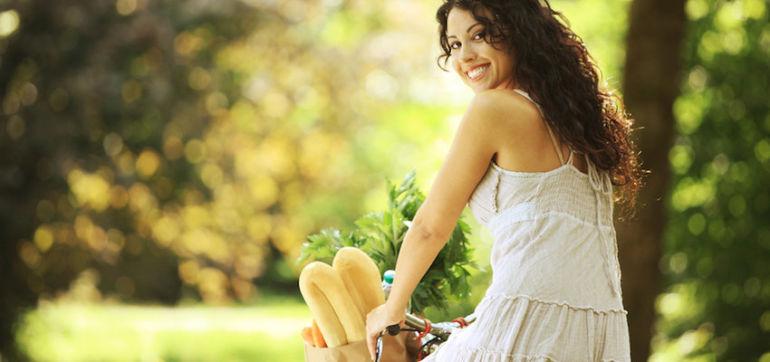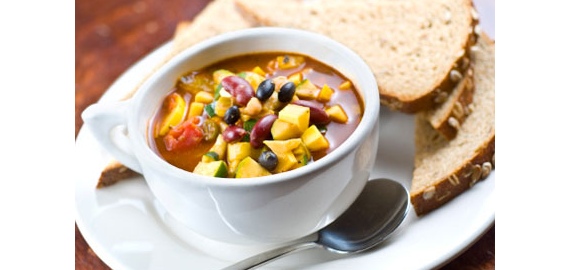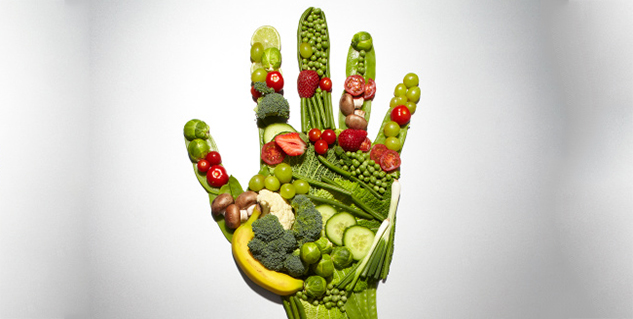4 Eating Styles That Lead To Weight Gain: Which One Are You?

We've been told to eat less, eat healthier, omit more fat from our diet, but these are all are roads to nowhere. It's time to consider a bigger dietary picture.
We'd like to introduce you to four women who walked down misguided paths in the attempt to stay trim. Which one are you?
Whole Grain Jane
Meet Whole Grain Jane. Organic whole grains such as brown rice, oats, and whole wheat pasta are her staples. She eats salad every day and chooses fruit for snacks. When she cooks meat, Jane uses only lean cuts. She loves potatoes and often has them as a side dish.
She feels proud that, like the national food guidelines recommend, her diet is higher in fiber, whole grains, fruits and vegetables, and lower in fat.
For a while, this diet worked well for Jane. But lately, her clothes don't fit. She feels bloated and doesn't have the energy she once enjoyed.
Drive Thru Sue
Drive Thru Sue is constantly on the go and not fond of cooking. Sue is a regular at local fast-food joints where she fuels her caffeine fix with a 32-ounce soda. When she does prepare a meal, it's often from packaged food, like mac and cheese.
Sue's weight has become a problem in recent years. She also has frequent headaches, suffers from constipation, and carries heartburn medication in her purse.
Raw Green Colleen
Raw Green Colleen eats neither meat nor dairy, consuming mainly live plant food: carrot smoothies for breakfast, salad, nuts and seeds, and dried fruit for snacks. Occasionally, she'll cook lentil soup, baked potatoes or brown rice. Colleen's mother and aunt battled breast cancer, and she decided to get serious about her health through a predominately raw diet.
Initially, Colleen lost weight and gained abundant energy. But eventually, she began noticing signs of fatigue and declining muscle tone.
Farm Fresh Tess
Farm Fresh Tess is a meat and potatoes person. She eats a lot of protein, like meat, eggs and dairy, with starches like bread, potatoes, noodles and rice.
Tess stopped caring about her extra padding long ago. Her steady weight gain has added 40 pounds to her frame.
The Overarching Problem
Despite their very different eating habits, all four women share a common problem: their blood sugar is too high.
Jane would be surprised how her whole grain diet escalates into more carbohydrates than her body can handle. Carbohydrates raise blood sugar, or glucose, which when overloaded, is stored as fat.
Sue is gaining weight because of her soda habit. Carbohydrates in liquid form rush straight into the bloodstream. Also, refined grains in her "get-n-go" diet cause high levels of glucose.
Colleen has a glucose- and fructose-rich diet with her dried and fresh fruits and carrot juice. She gets small amounts of protein in carbohydrate form, but years on her strict diet have left her protein deficient.
Tess, because of her heavy starch and sweets habit, may be headed toward Type 2 diabetes and/or hypertension.
We've been down many of these roads, too. We rode precariously on the bandwagon of vegetarianism, placing little emphasis on protein. At times, we believed dietary fat was the enemy. And, after juicing vegetables and fruits until we were blue in the face — or should we say orange from all the carrots! — we discovered juicing apples and carrots was like drinking soda all day as far as our blood sugar was concerned.
How To Fix It
We've spent the last two decades on a quest to find an optimum eating style that has a gentle impact on blood sugar through a low glycemic, carb-conscious, well-balanced diet that's satisfying and energizing.
Our bodies rely on two primary fuel sources: glucose and fats. To lose weight, you need to burn one primary fuel source at a time. Protein should be the main focus of each meal. Add either carbs with your protein for an energizing meal, or fat for a satisfying meal — but never both.
The fat in a satisfying meal leaves you feeling satisfied as you exclude high-carb foods like grains, starchy vegetables and fruits. An energizing meal will invigorate you as it allows you to first burn glucose and then burn body fat to keep you running.
Switch between satisfying and energizing meals according to what your body feels like, making sure to keep at least three hours between the two meal types.
No matter which eating style you were following, you can regain your trim, healthy lifestyle by making a habit of centering your meals around protein and learning the difference between starchy and nonstarchy carbs, while even adding some beneficial fats.
Co-authored by Pearl Barrett
Photo Credit: Shutterstock
-
Cheese and Dairy Decreases Fertility in Men
Many couples make changes to their diets by adding healthy food
-
Free Weight Loss Info: The Way Calories Work
If you want some free weight loss info t
-
Top 10 Tips for Weight Loss from a Psychotherapist
We see many clients who are having trouble controlling their weight
-
Losing The Additional Flab
Changes within the standards of living inside the last few decades is
-
NutriSystem - The Science Of Losing Weight
Weight loss is one of the primary concerns of many people nowadays. Wi
-
3 Great Tips For Using Water For Faster Weight Loss
“Are you saying to drink water for weight loss? That just doe
- DON'T MISS
- Weight Loss Tip Dont Let Them Profit From You
- 5 Simple Rules I Used To Lose 75 Pounds In Less Than A Year
- Diets – Boost Your Weight Loss without Exercise
- Weight Loss Hypnosis to Lose Weight Fast
- How to Get Slim Fast – a Look at How the Top Dieters Lose Fat
- Facts You Need To Know About A Low Carb Diet
- Nutrition Faceoff: Hidden Valley Original Ranch Dressing vs. Fat-Free
- Best Diet - 3 Key Ingredients For Ultimate Diet Success
- Best Tips To Lose 10 Pounds In A Week
- Win the Battle! Conquer Holiday Weight Gain




